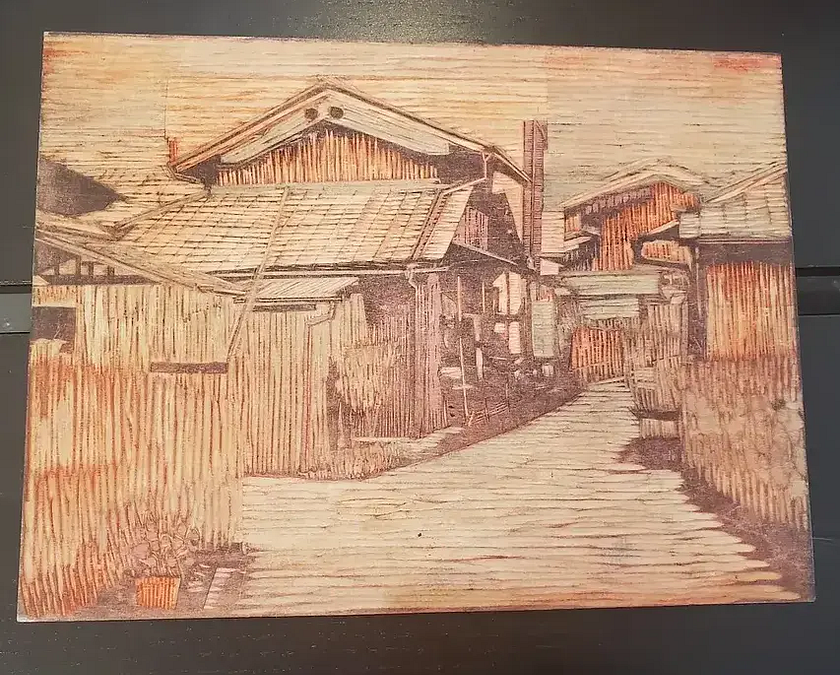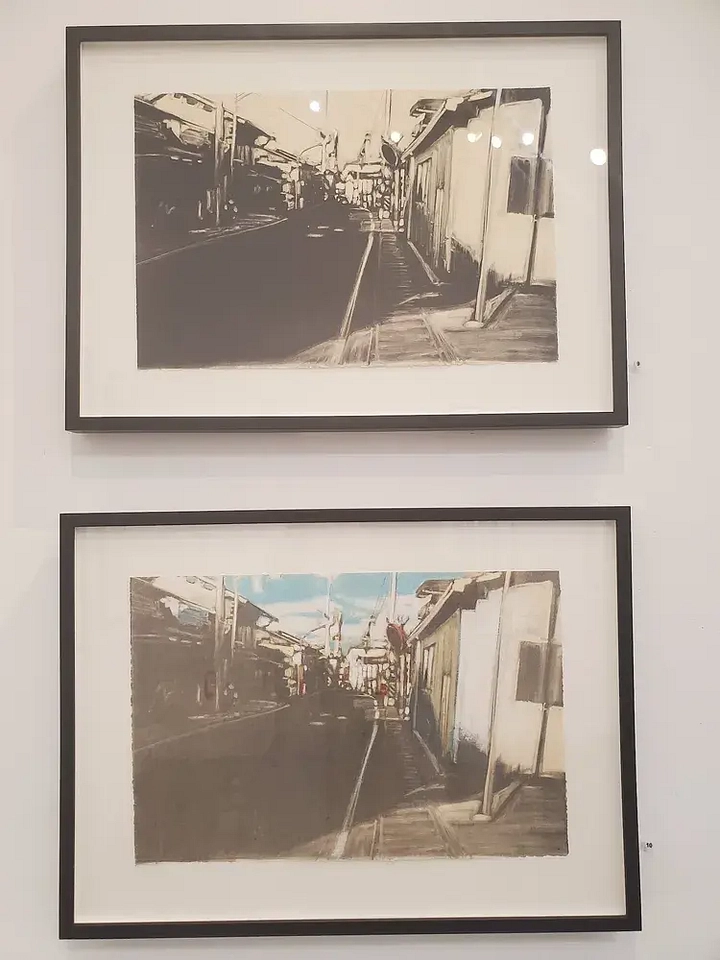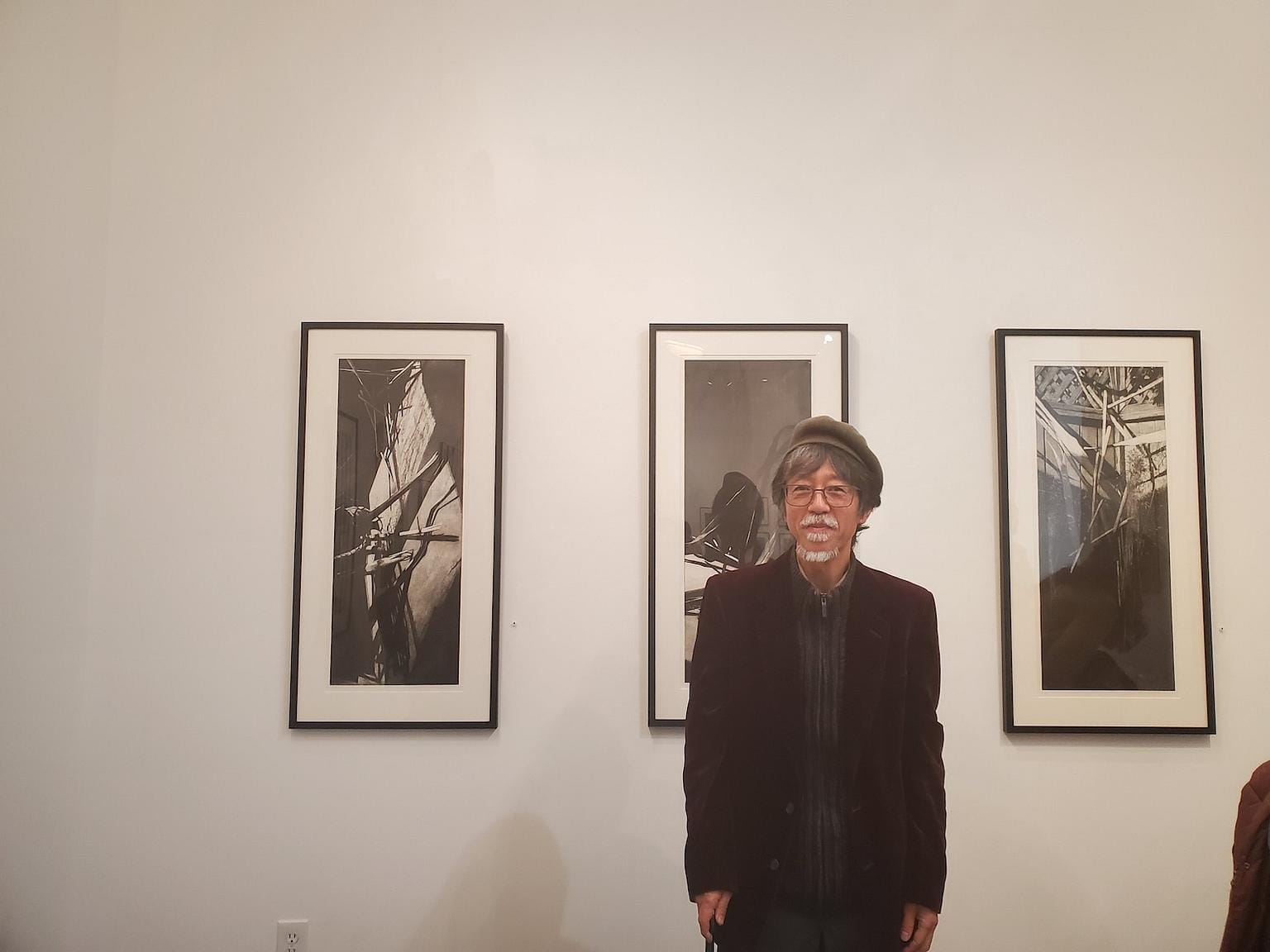Toru Sugita
Transmission Gallery
Oakland
Jan. 20, 2024
Is there a moment when a memory of a place changes color in the mind’s eye? When I conjure images of one of my childhood homes — in a working-class town in Connecticut, a short drive from Mystic Aquarium, where we used to go as kids — my mind blends in the damp, dark green of algae (this was a coastal town), the blues and greys of the apartment block, the freshly-fallen winter-white of the snow we played in. But if I linger too long, my mind begins to leech the color and assign the memories sepia and monochromes, as if doing its due diligence.
Toru Sugita uses color, or the absence of color, to reckon with a simiilar gulf between presence and memory in his exhibit, Across, on display until Jan. 27 at Transmission Gallery. People spilled out of the gallery room upstairs, where he talked about his childhood home in Shiga, an area near Kyoto, Japan. Though Sugita has lived for over 30 years in the Bay Area, his mother’s death last year helped him realize how fully invested he is in both homes, that he’s effectively “lived across both sides of the Pacific Ocean.” In the drawings and etchings in Across, his memory connects the two worlds in spirit, light, and shadows.

At first glance, Sugita’s work looks more like photographs. They feel like faithful reproductions of what a memory looks like — blurred around the edges, hazy blocks of color, shafts of light and shadow. These renderings evoke the effort and effect of conjuring memories that always seem as if they’re about to slip away. They’re not my hometown memories, but emotionally, they feel true to the art of memory and meditation.
A woodcut was passed around during the talk that reached me in the spillover room. Instinctively, I ran my fingers along the grooves etched into the wood in soft shades of umber and moth. Sugita talked about becoming so immersed in the process of etching that he found himself “identifying… as part of the space.” His hometown in Japan and his established life in the Bay Area, he said, “are constantly changing, but with the visual integrity of place intact.”
On the walls of the gallery, Sugita has several series of similar paintings and drawings, seemingly of the same place markers in Japan and the Bay Area, but with the light and shadows modified and modulated. It looks as if he’s trying to work out which memory seems the most accurate, or the most fitting for each mood. Walls of his art, identical frames in neat squares evenly spaced, mimic the act of the mind’s eye scrolling through images, bridging the gulf between experience, presence, and memory. A young girl wearing a mask on a train platform, repeated renderings of small-town alleys, a chair in a backyard, the shifting of shadows, seem less about the recreation of images and more about an artist trying to work out the idea of “home” and “place.”
It feels intentional that the literal and emotional act of “feeling” in Sugita’s work creates a conduit to our own personal experience of sense-memory. It’s a neat trick. Outside, the rain having leeched color from the streets of Oakland, I walked outside, my mind and memories placing me somewhere else.







